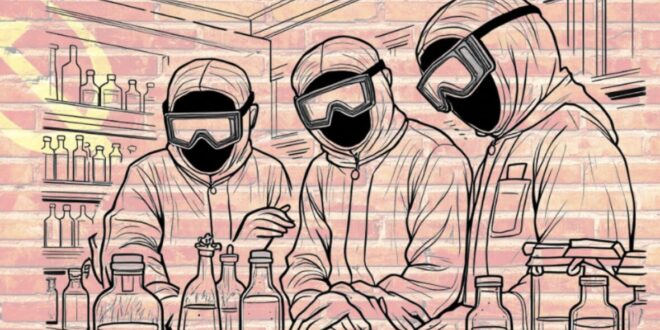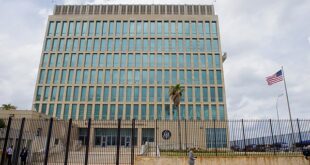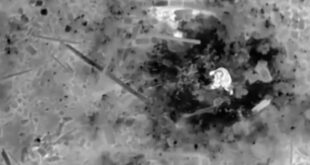by Susan Katz Keating
The promise of Red Mercury infiltrated the underworld of gullible would-be tyrants, despots, and autocrats, sparking imaginations and a frenzy of deal-making. But what was this mysterious substance?
It was the ultimate black market sensation. A substance so powerful it could transform even a lone terrorist cell into a nuclear power, armed with a tiny bomb that could devastate any landscape. The mysterious Red Mercury was the shadow world’s answer to a mad scientist’s dream.
Prices were in the stratosphere. Starter-pack portions were said to have sold for more than $1m per pint.
“People got rich just by selling the introductions to someone who could procure this product,” according to one former Soviet citizen, Yuri, who claims to know about the “Red Mercury fad” without having been directly involved. “It was quite remarkable,” he said, chuckling. “I laugh every time I think about this.”
Why does he laugh? Red Mercury doesn’t exist.
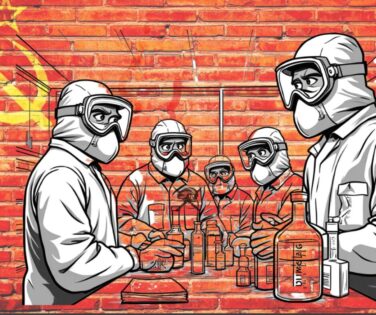
“It was a con game,” Yuri told Soldier of Fortune.
Others share his view – and have done so for decades.
“The whole thing is a bunch of malarkey,” a spokesman for the International Atomic Energy Agency told British newspaper The Guardian in 2004.
And yet, the promise of Red Mercury infiltrated the rarefied underworld of would-be tyrants, revolutionaries, and autocrats, sparking imaginations and a frenzy of deal-making. Despots and power brokers dispatched their emissaries, cash in hand, to meet with brokers.
“Many came through Alma-Ata,” in what is now Almaty in Kazakhstan, said Yuri. He claims to know this because he was “a low level security cog” in late Soviet times. He now lives in Western Europe, and spoke to Soldier of Fortune via a secure messaging app.
“The logic was ridiculous,” Yuri said. “If this material could make the perfect all-powerful bomb, why didn’t anyone use it? Because there is no Red Mercury.”
Still, the frenzy grew.
Customs officials throughout Europe seized shipments of Red Mercury that turned out to be harmless powders, Yuri said. The sales reps spread word that the captured shipments were counterfeit, and that the real Red Mercury had not been compromised. Security forces in Czechoslovakia stormed Mosnov Airport in August 1991, searching for more than 130 pounds of Red Mercury that supposedly had been smuggled out of the dying Soviet Union. The search came up empty. Sales reps said the airport raid was the result of a false tip, and that smuggling routes were secure.
The U.S. Department of Energy addressed the topic in a 1992 newsletter, offering a sardonic caveat emptor.
“Take a bogus material, give it an enigmatic name, exaggerate its physical properties and intended uses, mix in some human greed and intrigue and voila: one half baked scam,” the newsletter stated.
READ MORE from Susan Katz Keating: Is Putin Dead? Moscow Says ‘Nyet’; But If Swan Lake is Broadcast on Russian TV, All Bets Are Off
What is Red Mercury, and how did the story get started?
No one can identify the smoking beaker of where the rumor began, but the substance was rumored to be the product of a top-secret Soviet military lab.
Some claimed it was the breakthrough for next-generation nuclear warheads. Others said it was itself a nuclear weapon, or was the key ingredient for high-tech missile guidance systems or the anti-radar coatings of stealth aircraft and ships. Physical descriptions of Red Mercury varied wildly. It was a powder. It was a liquid. It was a gas. One middleman insisted it was a gelatinous, malleable blob. Another said it was a block of clay.
All the stories came down to destructive power.
With Red Mercury, anyone could create “a bomb the size of a grenade that could blow a ship out of the sea,” a Russian politician, Evgeny Korolev, said in 1992, at the height of the Red Mercury mania.
The marketeers who offered to sell Red Mercury tried to leverage Russia’s national food crisis, by obtaining government licenses that allowed exporters to trade goods for food.
Buyers supposedly included nuclear hopefuls in Ethiopia, North Korea, Iraq, and elsewhere. The foreign food shipments never materialized, but Red Mercury continued to be a hot item. Trafficking operations allegedly were intercepted in Bulgaria, Ukraine, Poland, Italy, and other transit routes.
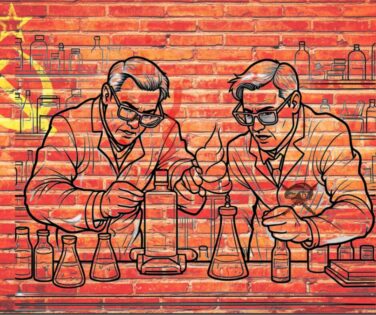
Rumors spread that bottles of Red Mercury had been lost, and were being stored in secret depots, to be dusted off and used when the moment was right.
Western scientists who obtained samples claimed that is was mercuric oxide or even a variation on mercurochrome, the household antiseptic that was banned in the U.S. and several other nations.
In Russia, investigators included Red Mercury in a collection of exposés centered on organized crime in the Soviet Union. Russian government agencies denied that the USSR ever produced Red Mercury. A government commission concluded in 1992 that Red Mercury was a hoax. But the hits – or attempted hits – kept coming.
“An Afghani tried to sell some to my unit in 2002,” one reader wrote on the Soldier of Fortune Facebook page. The substance by then was part of the scam artists’ repertoire. “Someone, maybe the same guy, tried to sell us a Soviet ‘nuclear device’ after that,” said the reader, who served with a Special Forces battalion. “He had a picture of it. It looked like part of a locomotive and was leaking oil.”
In the world of security hustlers, Red Mercury, though, was special. Why did its creators even concoct such a complex tale?
“It was probably the cover story for something else that brought even a bigger payoff,” Yuri said.
Russian officials appear to have agreed with that assessment.
The 1992 commission, led by then-Vice President Aleksandr Rutskoi, suggested a plausible motive for the hoax.
“We can assume with certainty that under the cover of deals involving ‘Red Mercury,’ massive international financial machinations are being carried out,” the commission stated. “It is possible that under the guise of ‘Red Mercury,’ valuable strategic materials (platinum, gold, osmium, indium, uranium, plutonium, and others) were exported.”
Nearly three decades later, gullible would-be terrorists had not received the memo. In March 2019, four men were arrested in Kyiv on charges of trying to sell two liters of Red Mercury. Their asking price was some $263,000.
“That’s a big price drop,” Yuri said. He noted that he has not heard of any deals since then. “Red Mercury was on the last gasp.”
At some point, even the best of cons run their course.
Susan Katz Keating is the publisher and editor in chief of Soldier of Fortune.
 Soldier of Fortune Magazine The Journal of Professional Adventurers
Soldier of Fortune Magazine The Journal of Professional Adventurers


